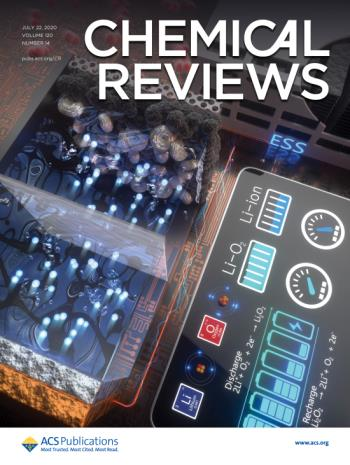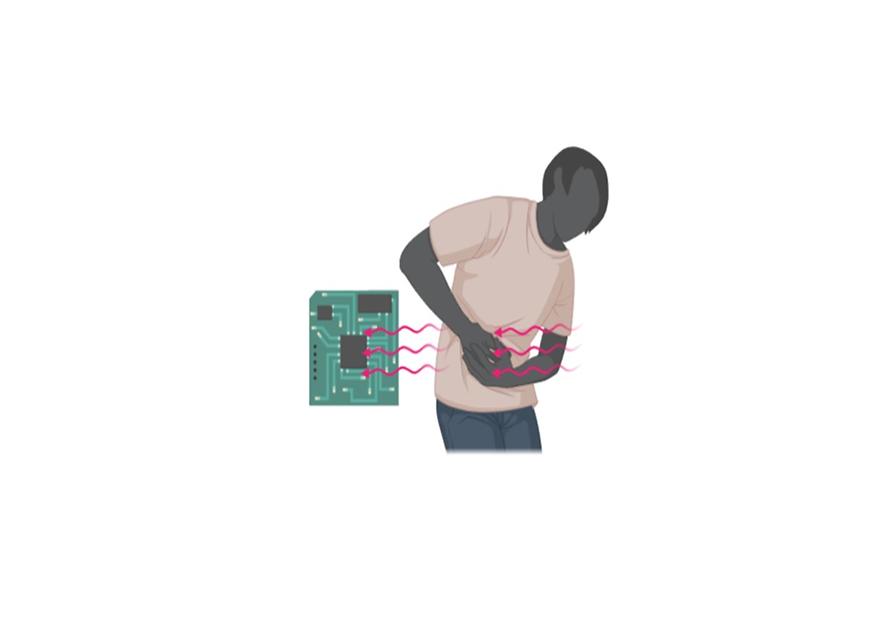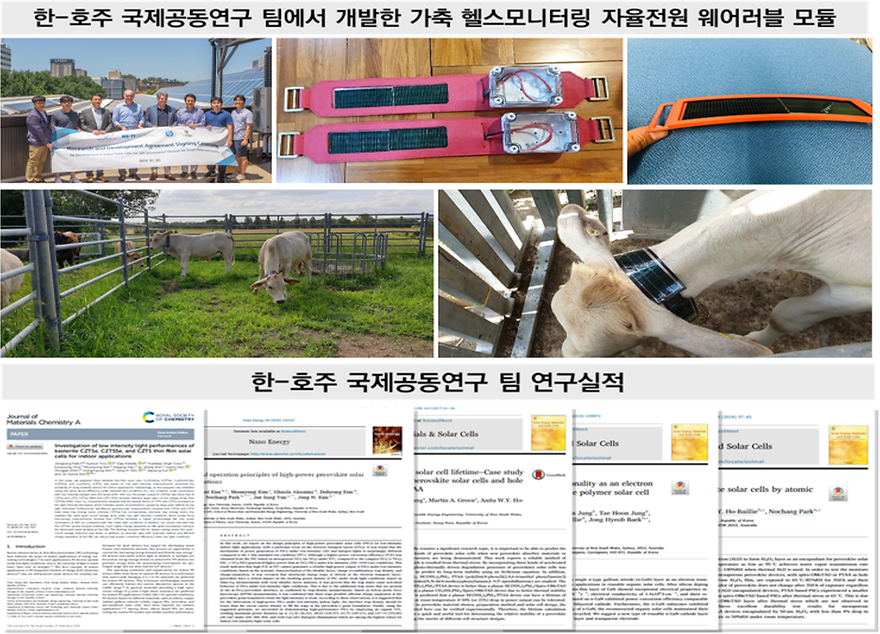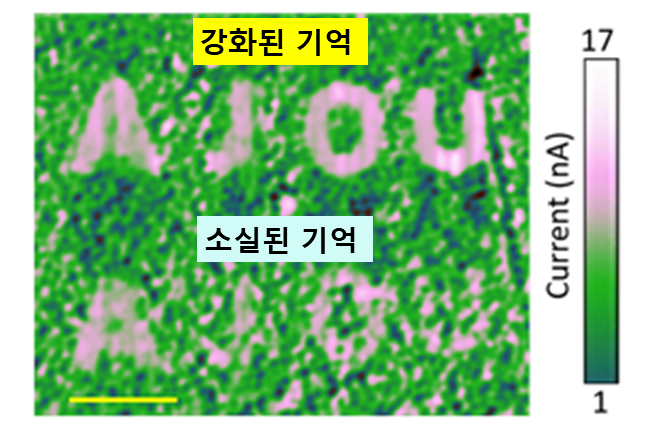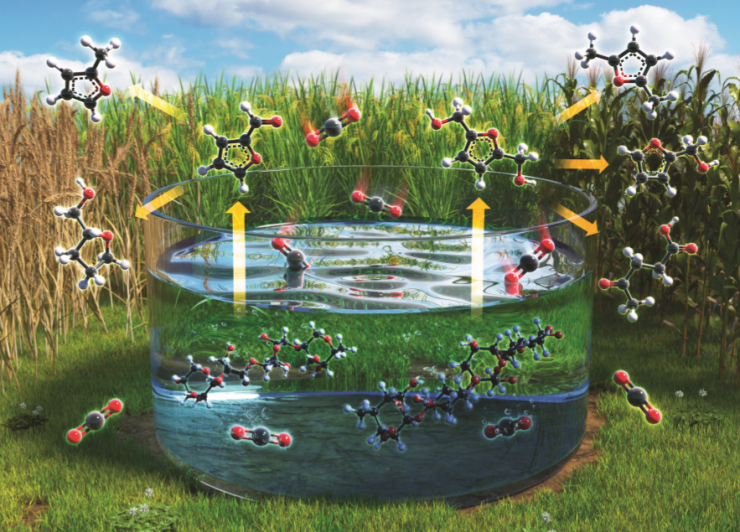-
A cover image of Chemical Reviews. ©ACS Publications.An article by a team of international researchers, which included Professor Kwak Won-jin (Department of Chemistry/Department of Energy System Research (Graduate)), was published as the cover article for the July 22 online issue of Chemical Reviews.The article, for which Prof. Kwak is a principal author, concerns lithium-oxygen batteries, a next-generation secondary battery system garnering attention worldwide. The team of researchers included Prof. Sun Yang-kook of Hanyang University, Korea; Prof. Doron Aurbach of Bar-Ilan University, Israel; Prof. Peter Bruce of the University of Oxford; and Prof. Linda Nazar of Waterloo University, Canada. Chemical Reviews, published by the American Chemical Society (ACS), is the top-ranked journal in the entire field of chemistry.In the article entitled “Lithium-Oxygen Batteries and Related Systems: Potential, Status, and Future,” Prof. Kwak and his colleagues introduce the findings of their years-long research into the structure of the lithium-oxygen battery, its working mechanism, and related derivative systems. The researchers also discuss the core issues and recent trends in research on the lithium-oxygen battery, and needed practical improvements.A next-generation secondary battery system capable of utilizing oxygen in the air as fuel, the lithium-oxygen battery holds the potential to surpass the theoretical energy density limit of the lithium ion battery used in electric vehicles. Research has abounded on the topic as a result, but there are also considerable obstacles that compromise its commercial viability, such as its short lifecycle as a side effect of reacting with oxygen, its low energy efficiency due to the inevitable creation and dissolution of byproducts. Innovative solutions to these problems are needed.Prof. Kwak explains: “It is exceedingly difficult to improve the lithium oxygen battery’s energy efficiency and reversibility to a viable level, as there are a number of complex factors involved,” adding, “But, insofar as the demand for high-energy-density battery systems continues to grow, we should continue rising to the challenge.”Prof. Kwak will continue his research on the lithium oxygen battery in his new faculty position in the Department of Chemistry at Ajou University, where he was appointed in the spring semester. He has published a number of articles in this year, addressing issues with the lithium oxygen battery and possible solutions.
-
10
- 작성자OI***
- 작성일2020-12-18
- 4680
- 동영상동영상
-
Scientists develop a novel photoelectronic device that can sense and map muscle strain remotely within microseconds, with no harmful effectsScientists from Ajou University in Korea have developed a novel highly sensitive photoelectric device that can generate noticeably different alternating currents upon illumination with even slightly varied wavelengths of near-infrared light. Since near-infrared light can deeply penetrate muscles and tissues with no adverse effects, this device could be used to remotely and harmlessly pinpoint body aches and muscle strain real time, replacing standard X-ray imaging techniques that could be harmful. The new near-infrared light–based device can help in real-time identification of body aches and muscle strainPicture credit: Hyungtak Seo, Ajou UniversityThe photovoltaic effect, in which a material generates an electric current upon exposure to light (photons), is one of the cornerstones of optoelectronics, and the principle of operation of important technological advances such as solar cells. Optoelectronic devices have found a wide range of applications in fields such as energy harvesting, communication, and imaging, but their impact in the medical field has been limited. A major roadblock has been the poor performance of affordable optoelectronic devices under light at near-infrared frequencies. The utility of near-infrared light in medicine was discovered amid efforts to find alternatives to x-ray imaging techniques, which increase the risk of cancer. Near-infrared light penetrates deep into tissues with no harmful consequences and minimal absorption, making it potentially useful in sensing and imaging. Now, a team of scientists at Ajou University, Korea, led by Professor Hyungtak Seo, has developed a novel device that can make near-infrared-based tissue imaging a commercial reality. Their study is published in Elsevier’s Nano Energy. Through a scalable and customizable fabrication process, Prof Seo and team grew a titanium oxide (TiO2) thin film on a silicon substrate. Because of its structure, the device generates an easily detectable alternating current (AC) upon illumination with periodically pulsed light. After an array of varied experiments, the team gained deeper insight into the mechanism underlying this AC photovoltaic effect. Prof Seo explains: “This phenomenon is caused by quasi-Fermi level splitting and rearrangement, which is essentially a perturbation in the equilibrium of charge carriers in the conduction and valence bands due to incident light.” The absorption coefficient of human bio-architecture (bones, muscle, skin, body fluid, etc.) in the NIR range is trivial and, thus, can provide beneficial information. Because transmitted NIR intensity depends on bio-architecture density, it can be expected to change after passing through damaged, strained, or irregular bio-architecture, which could be reflected in the device response.Picture credit: Hyungtak Seo, Ajou UniversityIn their paper, the scientists present a proof-of-concept demonstration of the applicability of their device to mapping body aches and muscle damage. When pulsed near-infrared radiation is passed through first a normal and then a strained muscle, the change in muscle shape causes a change in the light emitted by the muscle, which was then detected by the device. The device responds to these changes by generating different currents for each wavelength within microseconds. Excited about the results, Prof Seo remarks: “Considering that body aches are a common symptom of COVID-19 and other diseases, pinpointing them using optoelectronic devices could be essential in clinical settings, especially for kids, who often cannot express their pain.”Schematic representation of the novel photoelectric device Picture credit: Hyungtak Seo, Ajou UniversityMoreover, the device does not require an external voltage to operate, making it highly energy efficient, and its fabrication is possible with relatively simple existing techniques. To top it all, it functions not only in the near-infrared part of the spectrum but also in the visible and ultraviolet regions. Thus, Prof Seo and team believe that the commercialization of this technology should be straightforward, and it could easily find a home in the medical field, optical communication, digital displays, and sensing applications. Further research will certainly unlock its full potential, making our lives better!ReferenceAuthors:Mohit Kumar1, Hyobin Choi2, Jaeseong Lim2, Ji-Yong Park3, Sangwan Kim4*,Hyungtak Seo1,2*Title of original paper:Broadband alternating current photovoltaic effect: An application for high-performance sensing and imaging body achesJournal:Nano EnergyDOI:10.1016/j.nanoen.2020.105240Affiliations:1Department of Materials Science and Engineering, Ajou University 2Department of Energy Systems Research, Ajou University 3Department of Physics, Ajou University4Department of Electrical and Computer Engineering, Ajou University*Corresponding authors’ emails: hseo@ajou.ac.kr (H. Seo) About the authorProf. Hyungtak Seo received a Ph.D. in 2008 from North Carolina State University, USA, and worked at Lawrence Berkeley National Laboratory until September 2011. Since 2011, he has been a Professor at Ajou University, where he is the PI of the Advanced Electronic & Energy Materials (AEEM) Laboratory. His current interests are in (i) fabricating nano-materials for solar cells and photocatalysis applications; (ii) designing materials/devices for next-generation integrated circuit neuromorphic devices; (iii) tuning the electronic properties of nanoscale semiconductors for electrical and energy applications; (iv) and analyzing the properties of functional materials via UPS, XPS, ellipsometry, etc.
-
8
- 작성자통합 관리자
- 작성일2020-11-10
- 6413
- 동영상동영상
-
* Self-powered wearable module for diagnosing livestock health, developed by a team of Korean and Australian researchers* Joint research by Korean and Australian researchersA team of researchers led by Professor Kim Jong-hyun (Department of Applied Chemistry and Biological Engineering/Graduate Department of Molecular Science and Technology), working together with a team of Australian researchers, succeeded in developing the core technology for a self-powered wearable module for diagnosing livestock health. The technology is expected to aid in the development of a cutting-edge digital platform that allows large livestock farmers to diagnose and manage the health of their livestock in real time.The results of the research collaboration, entitled “Investigation of Low-intensity Light Performance of Kesterite CZTSe, CZTSSe, and CZTS Thin-film Solar Cells for Indoor Applications,” were published on the online issue of Journal of Materials Chemistry A (IF = 11.301, JCR top 6.7%) on July 21. The authors include researchers from Ajou University, the Green Energy Institute, Chonnam National University, and the University of New South Wales.The researchers discovered the mechanism of a CZTSSe-based solar cell that can be used in a variety of low-light settings. CZTS-based thin-film solar cells are affordable and eco-friendly light absorbers, and are expected to lead to the development of a better alternative to existing solar cells, which are expensive and made of environmentally harmful heavy metals. Although CZTS-based solar cells have been known to boast superior conversion efficiency in outdoor settings with abundant sunlight, little research has been done on how effective they are in low-light settings, such as overcast weather and indoor environments.The researchers thus set out to develop a CZTSSe film that could be used in a variety of low-light environments, and proved that such film could produce enough electricity to run Internet-of-things (IoT) sensors even in low-light settings. In other words, their CZTSSe thin-film solar cell demonstrated the capability for application to self-powered IoT sensors of various types used in either indoor or outdoor settings.Timely and accurate diagnosis and projection of livestock diseases, including swine fever and foot-and-mouth disease (FMD), based on efficient monitoring is crucial to the containment of contagious animal diseases as well as the welfare of animals. Members of Professor Kim’s team have been working together on multiple projects over the years to develop effective livestock health monitoring systems through collaboration with industries and academic institutions worldwide. The team has included members from Ajou University (Professor Kim), Chonnam National University (Professor Kim Jin-hyeok), Korea Electronics Technology Institute (Dr. Kim Jin-cheol and Dr. Park No-chang), Green Energy Institute (Dr. Park Jong-seong[KHTC1]), Daeyeon C&I Inc., and University of New South Wales and University of Queensland, both in Australia.This global team has been searching for ways to create a wireless, standalone power system that can reliably supply electricity irrespective of the differences in livestock farming environments. Since developing a self-powered wearable module sensor for livestock health assessment, the researchers have been testing it in Australia.The key to making a device like this possible lies in a solar cell that can be used in both outdoor and indoor environments. To this end, the team first developed a perovskite solar cell with superior output, and published their study in Nano Energy, a widely cited academic journal, in February 2020. The team had also been researching encapsulation technology to ensure the actual applicability of the solar cell they developed, and had their findings published in Solar Energy Materials & Solar Cells in December 2018.Professor Kim explained, “We have developed a wireless, self-powered, wearable sensor module based on our earlier studies, and are now testing it on cattle on a farm in Brisbane. We plan to expand our trial to include large-scale farms in other regions of Australia.”The team regularly organizes their own meetings and exchanges to facilitate better understanding of the technological demands of large livestock farms in Australia and develop solutions accordingly. A leader in advanced livestock and agricultural technologies, Australia has a significant stake in developing reliable solutions for diagnosing livestock health so as to help farmers protect and increase their income. The researchers are now planning to expand the scale of their experiment in Australia with additional support promised by the city of Narromine and its mayor, Craig Davies, in New South Wales.Professor Kim remarked, “When we succeed in developing the final product based on our wearable livestock health diagnosis module, it will very likely find a welcoming market in the Australian livestock industry. We intend to add the big data from our continuing trials and the AI-based model of analysis we are developing to our study and build diagnostic and monitoring platforms by country and livestock species.”The team’s research has been aided by the International R&D Collaboration Program (P0006857) of the Ministry of Trade, Industry and Energy and the Korea Institute for Advancement of Technology, as well as the Korea-Oceania Collaboration Infrastructure Development Program (NRF-2018K1A3A1A17081404) of the Ministry of Science and ICT and the National Research Foundation of Korea.
-
6
- 작성자이근***
- 작성일2020-08-27
- 9315
- 동영상동영상
-
Professor Seo Hyung-tak’s team has succeeded in developing a nerve-emulating artificial synapse, raising expectations for the creation of a high-density artificial synaptic platform that emulates the synapse, the fundamental structure for nerve signal transmission in organisms.Professor Seo (Department of Materials Science and Engineering/Graduate Department of Energy Systems, pictured) has disclosed that his team has successfully developed a nano-scale artificial synapse that simulates actual nerves, and identified its mechanism. The team’s study, entitled “Brain-like Spatiotemporal Information Processing with Nanosized Second-order Synaptic Emulators: ‘Solid-state Memory Visualizer’,” was published on June 27 on the online edition of Nano Energy (IF = 16.602). The team included Professor Park Ji-yong (Department of Physics), Professor Kim Sang-wan (Department of Electrical and Computer Engineering), and Dr. Mohit Kumar. The synapse, which forms the basic unit of the brain, connects neurons to enable the transmission of signals between them. Nerve cells are able to communicate because synapses exchange neurotransmitters. In recent years, research on the development of artificial synapses using various new materials has been growing.The von Neumann architecture, which has been frequently used in research of this kind, has been found wanting in terms of energy efficiency and speed. The architecture transmits information from the memory to the central processing unit (CPU) for sequential information processing. As a result, the memory becomes prone to bottlenecks, slowing down the processing speed, increasing energy demand, and complicating the differentiated retrieval of information reflecting different intensities of spatiotemporal information.Unsurprisingly, there has been much demand for a nanosized artificial neural network capable, like synapses, of processing information with little electricity, controlling short- and long-term memory in response to the strength and duration of the given stimuli, and integrating memories in high density. Developing such a device, of course, requires an accurate understanding of how individual synapses function.Professor Seo’s team attempted to develop an artificial neural network using a heterogeneous-structured artificial synapse that combines nickel oxide (NiO) and zinc oxide (ZnO). The conjoined surface of these compounds controls the chemical effects of the materials and emulates the ion-based neurotransmission of actual nerves. Using this mechanism, the team successfully created a deliberate surfactant defect to serve as a receptor of electrons, allowing them to store and control, in the defect, electrons moved by external stimuli to emulate the short- and long-term memory of human synapses.Professor Seo explained, “While our method is similar to how non-volatile flash memory devices, widely used today, store information, our product is distinct in that it can control the stored information in response to the intensity or duration of input signals.” He went on to add, “This technology allows us to emulate all the typical properties of actual synapses and neural networks.”Furthermore, by making effective use of the homogenous resistant switching movements of their artificial synapse, the team has proven that the size of an artificial synapse can be reduced to 40 nanometers (1 nanometer = 1x10-9 meters) with the help of conductive atomic force microscopy (CAFM). This size is similar to that of an actual synapse.The team has also confirmed that their artificial synapse is capable of not only functioning stably, but also supporting the parallel connection of innumerable artificial synapses to enable multi-stage signal processing and real-time learning rules (Bienenstock, Cooper, and Munro rules), which are crucial to artificial intelligence, at the nanoscale.Professor Seo said, “A human brain is a bundle of nearly 100 trillion synapses connected in a parallel circuit. To develop an AI system with artificial synapses, each individual synapse must be capable of emulating the human brain’s mechanism for learning and processing multi-stage signals.”He also remarked, “Our latest finding successfully identifies how artificial synapses, using nanoscale oxides, can emulate the functioning of actual synapses. We expect that this discovery will contribute to the development of a high-density AI platform.”The team’s research was conducted with support from the Future New Material and Original Technology Development Program and the Basic Research Support Program for Experienced Researchers, provided by the Ministry of Science and ICT (MSIT) and National Research Foundation of Korea.
-
4
- 작성자이근***
- 작성일2020-08-27
- 8930
- 동영상동영상
-
-
2
- 작성자OI***
- 작성일2020-08-27
- 8469
- 동영상동영상

